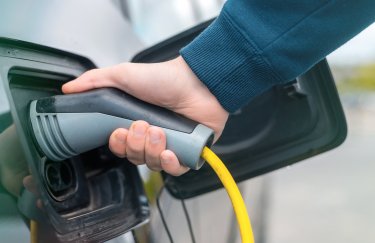-

Alik Sakhno
correspondent

The reasonable price of electric vehicles encourages the advancement of the sector. Photo: Freepik
Despite ongoing conflict and frequent strikes on energy-related facilities, the Ukrainian electric car market proceeds to expand. Simultaneously, the charging station infrastructure is being built – there are presently about 5 thousand charging locations in the nation. Although competition has appeared within this sector, the inventive business still encounters a set of difficulties that demand consideration at the national level.
Delo.ua sought to discover the precise ways in which the infrastructure for electric vehicles is being developed and the challenges that business owners and vehicle possessors are undergoing .
How many charging points exist within Ukraine?
The media section of the YASNO enterprise reveals information indicating that the latest counts of charging stations in Ukraine were implemented in 2023, although there isn’t recent data available for the present year. As per that research, the aggregate sum of charging stations in Ukraine reached 5 thousand, with 20-25% being rapid charging stations.
“The majority of charging stations are situated in Kyiv and its area, along with Lviv, Dnipropetrovsk, Odessa and Kharkiv regions. This is attributed to the greater concentration of population, a higher count of electric cars and a developed framework, encompassing shopping centers, fuel stations and business buildings where these stations are established,” the company conveyed.
However, Denys Kosoy, co-proprietor of the Flash electric charging station network, indicates that the total of working charging stations in Ukraine is fewer — approximately 4,000. As per him, around 1,200 are owned by the EVA Chargers network (previously Autoenterprise), with a further 800 held by Ionity Ukraine. Toka, Go To-U, and Ecofactor come next — each possessing approximately 300 stations.
“Our Flash network contains approximately 125 stations. An additional player is YASNO, they own approximately 100 stations. There are as well operators with smaller frameworks – 20-50 stations each. There are diverse sorts of stations – slow and DC-powerful. On the market, those evaluated at 80 kW or greater are customarily regarded as powerful, because there are also weaker ones – 20 or 40 kW,” Kosoy specifies.
In parallel, the YASNO press office appends that the OKKO and WOG fuel station chains are also gaining force, but the business did not elaborate on the segment share they command or propose to acquire.
How the armed conflict impacted the charging station market
The full-scale intrusion exerted both a deterrent and an incentivizing influence on the advancement of the charging station network. According to YASNO, at the start of 2022 there was a decline in numerous private investments, but in 2023-2024 a gradual revival in the tempo of charging station implementation commenced.
“In the changed environment, investors must consider the hazards of asset losses, in addition to potential harm to networks and power disruptions. Furthermore, the war upset supply routes – imports of hardware, electronic parts, and machinery have risen in expense,” YASNO declares.
The augmentation in the expense of materials and labor, correspondingly, entails even greater capital investments. All of this curtails the attractiveness for investors. But concurrently, the constant rise of electric vehicles in the country establishes advantageous circumstances for the charging infrastructure market’s progression.
Specifically, according to the Institute for Automotive Market Research, the aggregate magnitude of the electric vehicle area (encompassing vehicles, trucks and buses) as of August 2025 amounted to a record 11.5 thousand, representing a 12.5% rise compared to July of this year and 22.5% greater than the prior year’s statistics for August 2024.
“The marketplace has grown substantially in recent years. Until 2020, just one large firm, Autoenterprise, was essentially running, and overall, there were not many stations. Within our framework, for instance, in 2021 there were only 15 stations. We were actively progressing already during the full-scale conflict, but it was not attributed to the war, but because even prior to its onset we possessed expansion plans. Other businesses behaved similarly,” Denys Kosoy emphasizes.
War persists as one of the principal barriers to the advancement of electric charging infrastructure, as shelling destroys and impairs the power grid and the charging stations themselves. The industry’s progression is additionally hampered by insufficient capacity of local power grids and fairly considerable primary investments.
“The majority of individuals employ cars exclusively in the city, and they don’t even necessitate infrastructure – they charge at their residences from a wall outlet. But journeys between cities necessitate the construction of high-speed charging,” Kosoy states.
What anticipations exist for Ukrainian electric vehicle possessors in the approaching years
With the anticipated surge in the quantity of electric vehicles in Ukraine, the need for charging stations will sustain its growth. Within cities, developers will increasingly encompass parking spaces with electric vehicle charging infrastructure within their schemes.
“Fresh charging stations will likewise manifest on highways, especially heading west. Ultra-fast charging will be the most commonplace, together with “smart” charging stations adept at optimizing the charging procedure and incorporating renewable energy sources,” the YASNO firm conveyed.
Co-proprietor of the Flash network Denis Kosoy asserts that tax alleviations are crucial for the continued progression of this sector, notably, reprieve from VAT on the import of electric vehicles.
“In the absence of this occurrence, the market could “remain stagnant” for a duration of a year or longer. Currently, while the advantage is active, everyone is attempting to import vehicles. Though upon its cessation, there will be a slump. A parallel adverse illustration exists in Poland and Slovakia, wherein such encouragements were absent. In contrast, Germany or the Netherlands are evolving, due to the elevated expense of driving conventional automobiles there,” the entrepreneur notes.
He further appends that Ukraine already possesses a substantial foundation of electric vehicles, adding up to over 150 thousand. According to Denys Kosy, a majority of their possessors will be disinclined to revert to traditional vehicles.
” However, the inquiry revolves around the willingness of prospective purchasers to disburse 20% greater for a car. The fundamental catalyst of the shift is the affordable price. If you possess the capacity to procure a Nissan Leaf for $8 thousand and operate it for 12 years with almost negligible expenditures, then it embodies profitability ,” — sums up the co-proprietor of the Flash electric charging station network .
Let’s remind you why Ukrainians purchase Chinese automobiles and the associated advantages and disadvantages.






